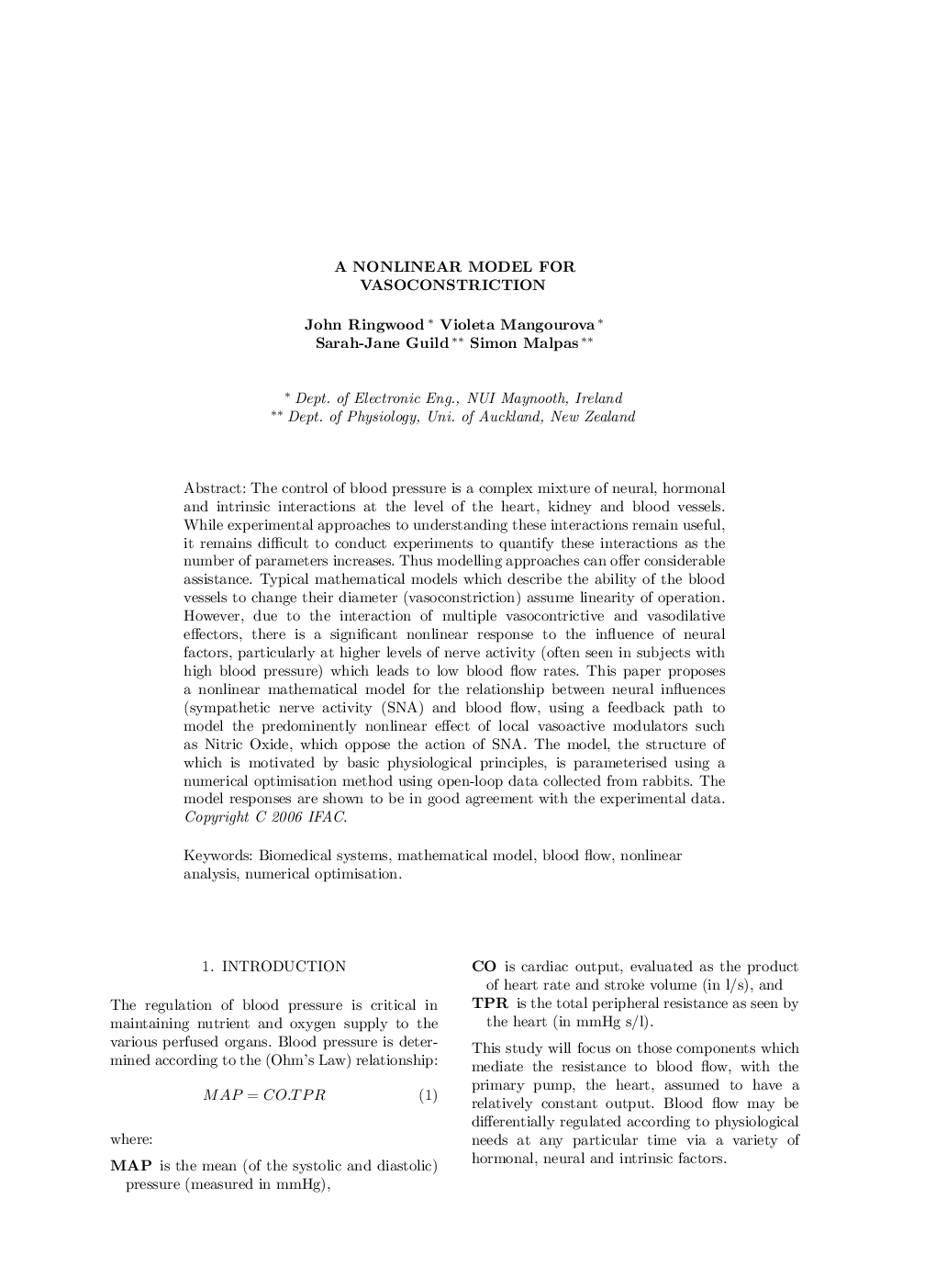| Article ID | Journal | Published Year | Pages | File Type |
|---|---|---|---|---|
| 723388 | IFAC Proceedings Volumes | 2006 | 6 Pages |
The control of blood pressure is a complex mixture of neural, hormonal and intrinsic interactions at the level of the heart, kidney and blood vessels. While experimental approaches to understanding these interactions remain useful, it remains difficult to conduct experiments to quantify these interactions as the number of parameters increases. Thus modelling approaches can offer considerable assistance. Typical mathematical models which describe the ability of the blood vessels to change their diameter (vasoconstriction) assume linearity of operation. However, due to the interaction of multiple vasocontrictive and vasodilative effectors, there is a significant nonlinear response to the influence of neural factors, particularly at higher levels of nerve activity (often seen in subjects with high blood pressure) which leads to low blood flow rates. This paper proposes a nonlinear mathematical model for the relationship between neural influences (sympathetic nerve activity (SNA) and blood flow, using a feedback path to model the predominently nonlinear effect of local vasoactive modulators such as Nitric Oxide, which oppose the action of SNA. The model, the structure of which is motivated by basic physiological principles, is parameterised using a numerical optimisation method using open-loop data collected from rabbits. The model responses are shown to be in good agreement with the experimental data.
